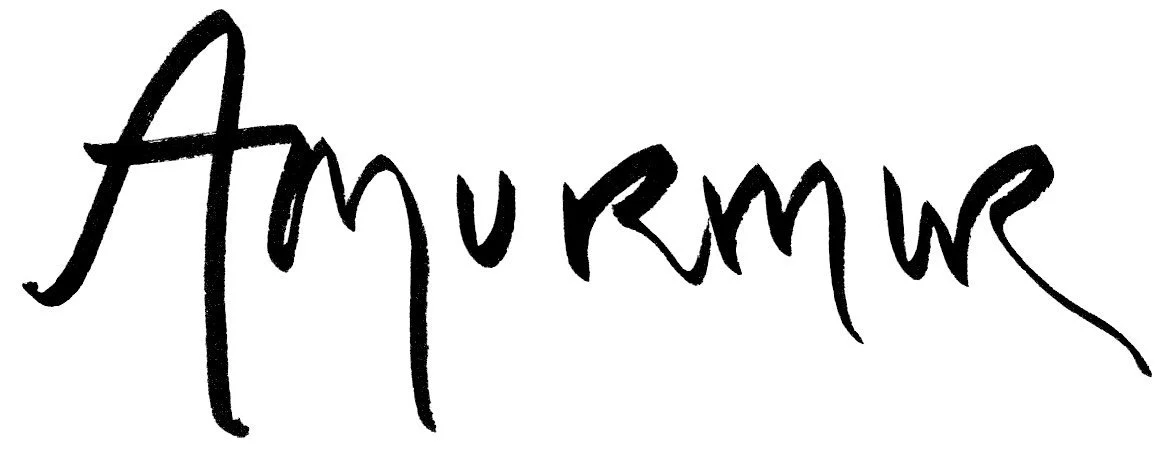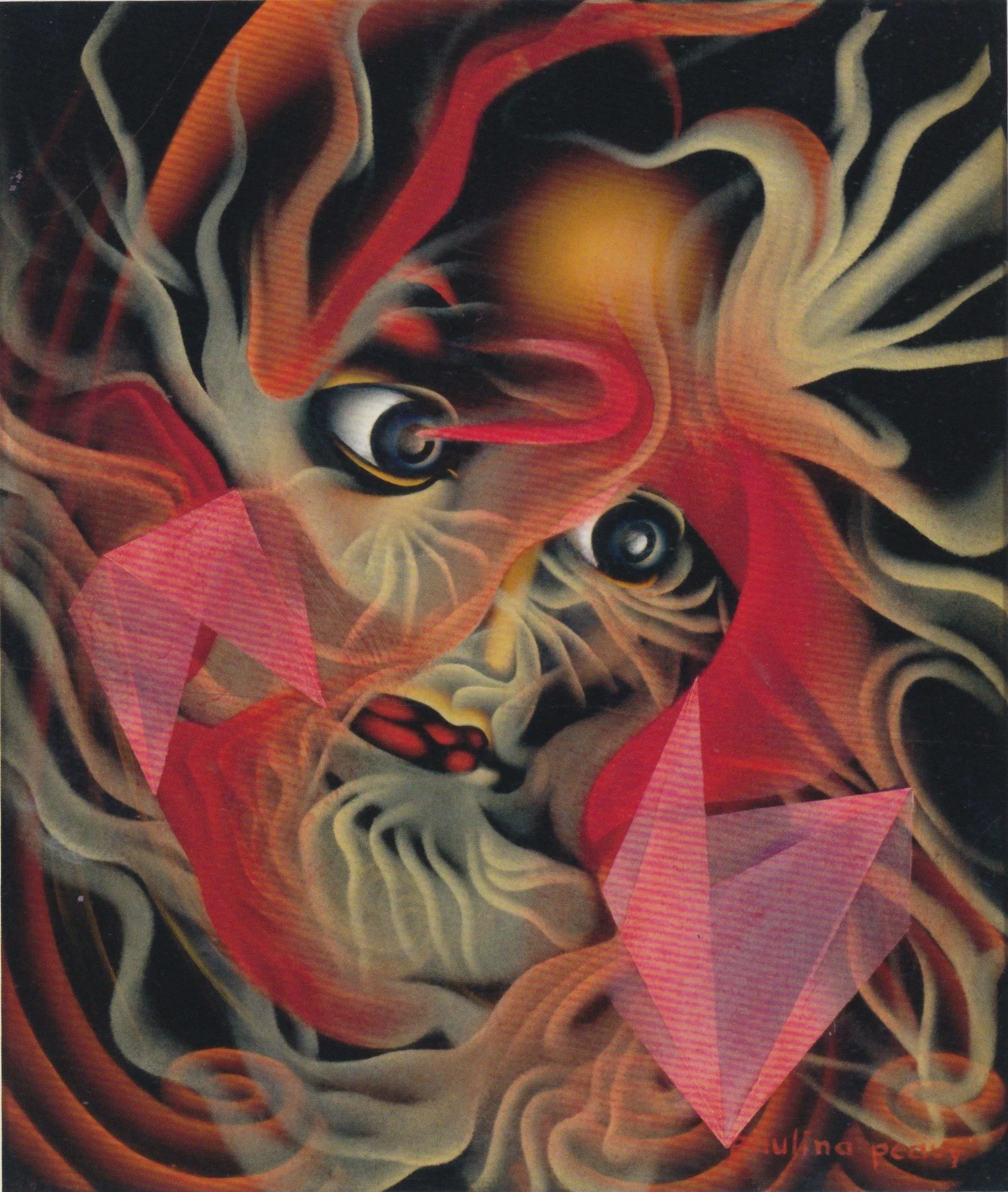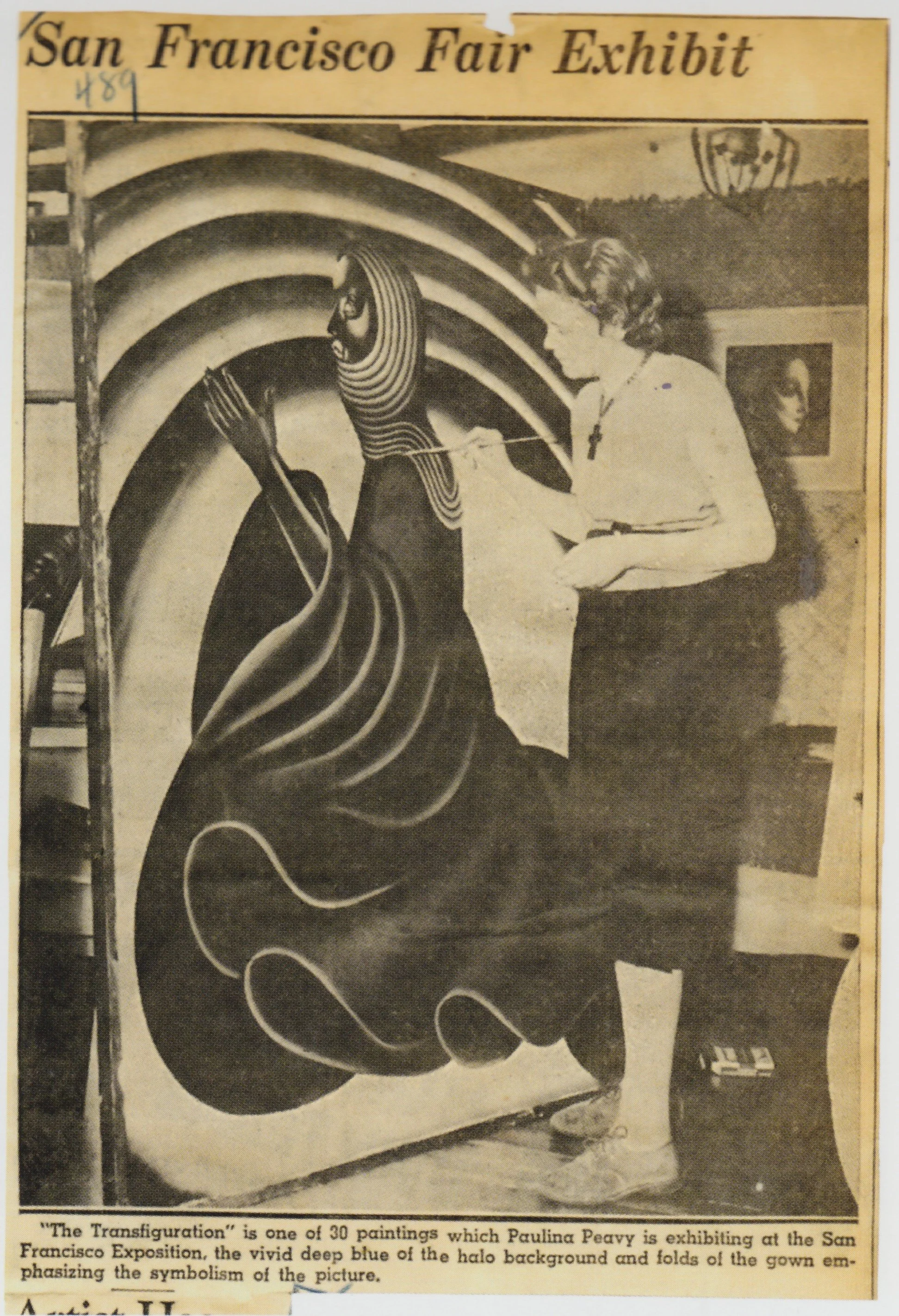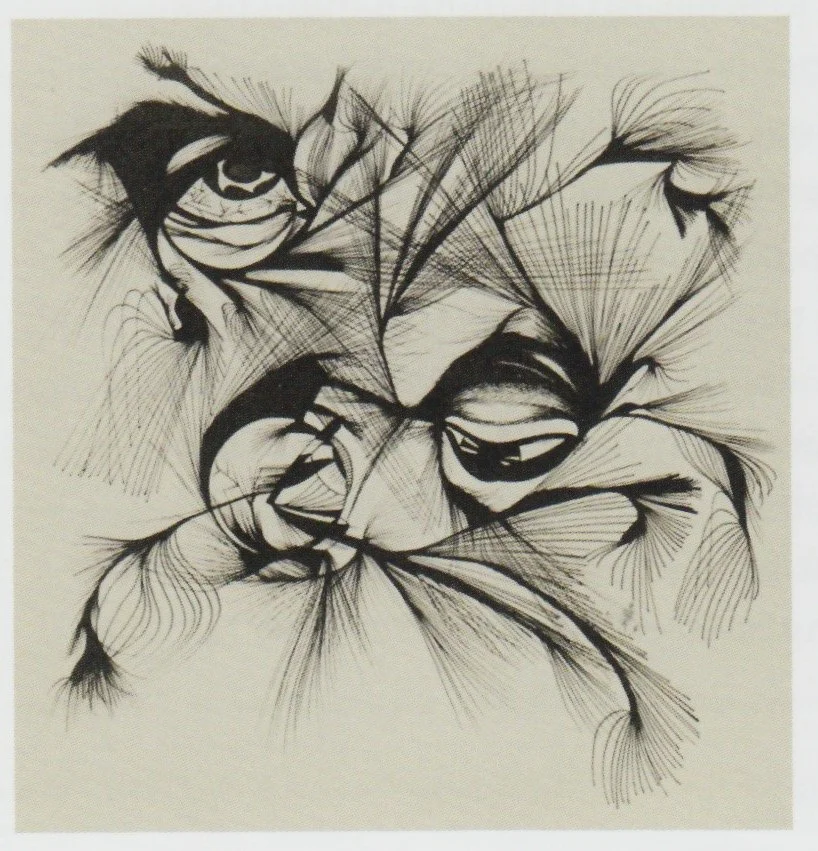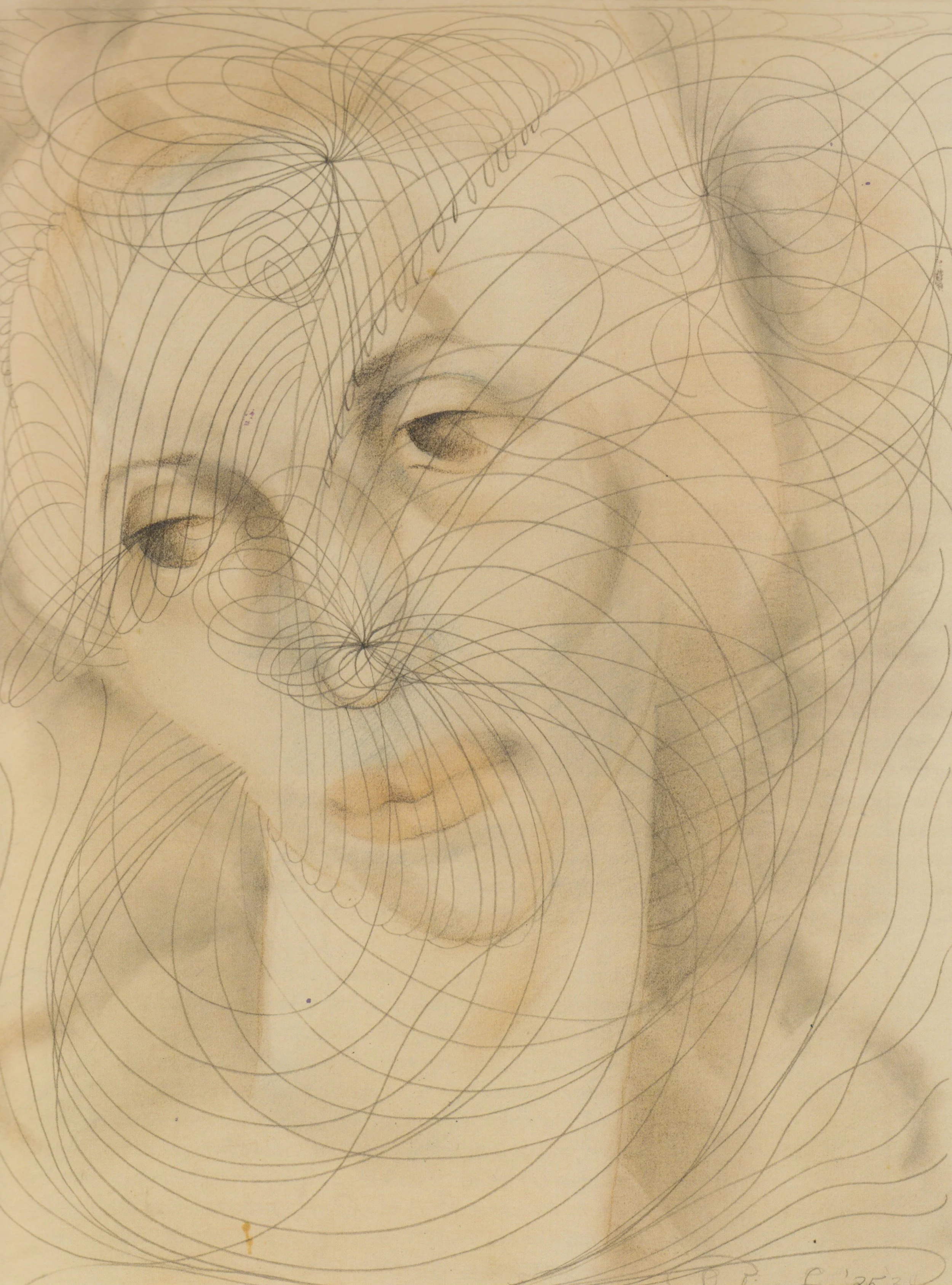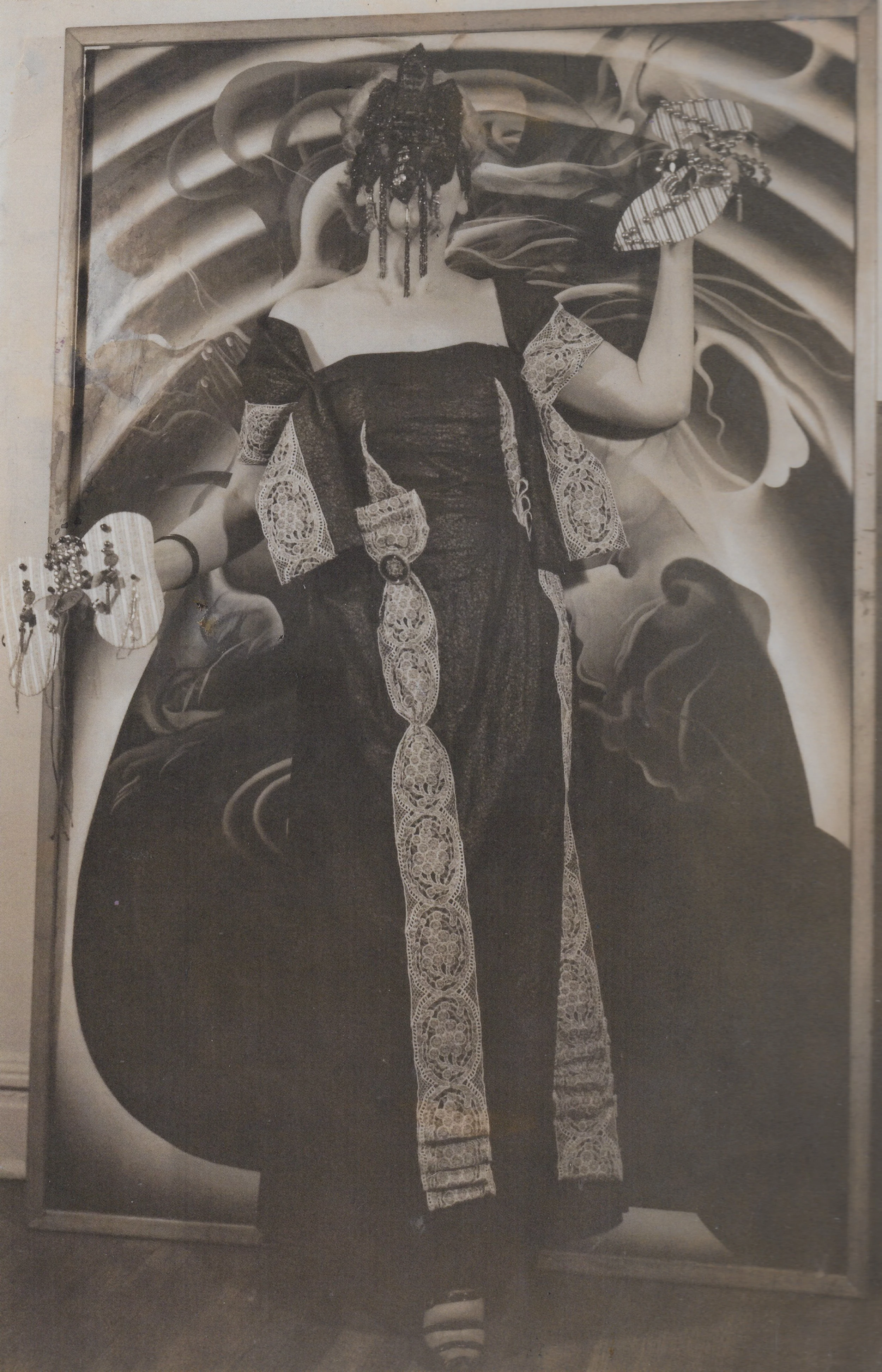Conduits to the Immaterial
The many gifts of artist and medium Paulina Peavy are revealed to us through care and celebration
Research likes to take its partner on a brazen dance. The unknown and undiscovered have a glorious way of seeking a companion that will not only unconditionally understand each of their steps and shakes, but will also encourage the development of a modern-day choreography for subjects who may not have found the encouragement to shimmy in their lifetime. When a lost artist settles on a new guardian, the many pleats of their life begin to uncoil and with it, waves of understanding explode onto the researcher.
Paulina Peavy Untitled (c.1937-1970s. Oil and acrylic on board. 14 x 12 in. Collection Andrew Eldin)
*Quotes in the following text are from ‘Paulina Peavy: Etherian Channeler’, a conversation with Katharine Armstrong (12th September 2025) and ‘Interview With Laura Whitcomb, Andrew Eldin Gallery' (Youtube)Let us begin with Katharine Armstrong. December 2014, Armstrong goes to a friend’s annual craft show. A present brighter than any imaginable shows itself to her. “I was comp-letely blown away.” She spots an ink drawing on the wall. “I was so struck by one of the drawings in colored ink, with both Peavy and Lacamo’s signatures, that I couldn’t let it go.” Here we recognise the early symptoms of the archive bug: a fever grows, the person begins to ask questions. Stephanie Hamilton, instigator of the party, had agreed to Andy Peavy’s wishes: her brother-in-law needed to find a new home for his late grandmother’s art so she displayed the work to draw in potential buyers. How graceful then, that of all people, it was Katharine who opened her arms to the spirit of the grandmother, a blazing woman named Paulina Peavy. What was it that had pulled her towards this work? “It was a gut feeling, and I’ve been really trying to articulate that.”
Paulina Peavy: Etherian Channeler is the hardback gift we all needed. It describes in empathetic depth and detail the life of a forgotten artist. A trailblazer: an painter, designer, architect, costumer designer, filmmaker, gallery owner, seer and spirit guide. The book, plentiful with previously unseen paintings, drawings and other pieces, is a masterpiece of fact-finding and testament for the power of belief and alternate philosophies. Most evident is the care and vigilance behind it as salient proof that Paulina Peavy (1901-1999) found the correct conduits to climb out of oblivion, be looked after, finally understood and revealed as being an important channel.
“I definitely feel that she found me.” Katharine explains she was in the midst of difficult life events when she first stumbled across Peavy. As research continued on its experimental steps, Armstrong later found out that Peavy herself had experienced similar things. A belief in the cyclical symbiosis of lifetimes revealed itself here: Katharine was caring for Peavy by resuscitating her story and Paulina, in turn, breathed new life into Katharine as she entrusted her with her own. When artists are in touch with something so much bigger than the plane they are evolving on, their care and the reasons requiring it extend to different time periods. “I feel so fortunate.”
Untitled (c.1940s. Graphite on paper. 13 x 10 in. Paulina Peavy Estate)
As Peavy spent the remaining years of her life in bustling New York, her grand-children, still residing there, were a valuable source for grasping elements of the last fraction of her life. They knew that she had been an architect when she lived in LA and that she had participated in the Golden Gate International Exposition. Armstrong instigated a search to find out more about this chapter of her life, and through gentle help and nudges from art-industry experts she was able to collect crumbs of information. No one had heard of Paulina Peavy. The important UFO component of her work finally guided her to the outsider art market. Wanting to unwrap more on the Golden Gate Exposition, she went to the San Francisco Archives and spoke to the archivist about the overwhelming research she was beginning to undertake. A woman, also researching, turned around and introduced herself. Laura Whitcomb harmoniously entered the picture.
Reflecting on the chance encounter, Katharine muses, “This was no accident, I firmly believe Paulina placed her there.” Armstrong had expressed a strong desire to have a female curator onboard this project. It’s as though Paulina knew who she wanted so she made it look like a casual coincidence and placed a perfect new voice into the narrative. In both this book and a talk given at Andrew Eldin Gallery, Whitcomb invites both the believer and the non-believer into the room. Should anyone be in any way skeptical of Peavy’s messages and convictions, “For the non-believer I think Peavy is a fascinating example of how our brains react to trauma in incredibly vivid ways. There’s a salving mechanism that creates a narrative through the imagination that explains the trauma you have experienced as being for a greater meaning. They were small sacrifices because your purpose in this world is to be a conduit of a participant of a higher agenda.” Laura Whitcomb’s writing and presentation reflect the tenderness with which she approached her subject and wove herself into the arboreal worlds and philosophies within Peavy’s many life chapters. During her life, Paulina was seen as controversial but Whitcomb’s words cushion the need to question the way the artist existed and what she believed in.
Paulina Peavy standing before GGIE painting The Transfiguration (July 2nd 1939, “San Francisco Fair Exhibit, Artist Has Canvases at Exposition,” Long Beach Press-Telegram p.A3, Graduate Theological Union Archives. Photograph courtesy Graduate Theological Union Archives, Temple of Religion and Tower of Peace, Golden Gate International Exposition Scrapbook, 1938-1939, Flore Hewlett Library, Berkeley, California)
“Little understood outside the small circle of visionary artists, philosophers and the astroculture aficionados she inhabited, Peavy was a prophet for the future. Her reputation required the passage of time to come to terms with the unorthodox ideas that were the foundation of her art and life. This biography is a step towards rectifying the situation. An appreciation of both Peavy’s cosmic art and philosophy remains a twenty-first century phenomenon.”
The Light was Provided by the Darkness, c.1950s. Ink on paper, Size unknown. Photo courtesy of Indigo Swann Papers (Piper Papers: Peavy File), Special Collections, university of West Georgia.
Laura Whitcomb dissolves any inkling of judgement received and intricately laces Paulina’s life back out of history’s stale storehouse. The book is divided into two parts, I: Peavy’s Artistic Development and II: A Cosmology Made Manifest, through which we learn of her early years and the pains that thrust her into creative outlets. Her progression from enrolling in courses on drawing, design, ceramics, metal work, costume and set design, lighting, stage craft and jewellery making take us through her marriage and move to California, the birth of her children, building design and scholarships and her opening of The Peavy Art Gallery, a space pivotal to the emergence of “a new progressive South Bay.” We’re then introduced to her acceptance in the Chouinard School of Art, the advancement of her artistic skills and the principles that encouraged her to move forth with her vision.
“Peavy’s growing network of friends with esoteric leanings offered a range of possibilities with California’s metaphysical movement. Her Chouinard classmate Mabel Alvarez was active in the creative circle of Theosophist Will Levington Comfort, whose salons in Los Angeles were also frequented by Agnes Pelton and Dane Rudyhar. His promotion of Theosophy also influenced Alice Bailey, whose teachings were widely embraced during this period of economic hardship. Victimized by patriarchal oppression, Peavy found a platform for emancipation in Spiritualism, which was particularly attractive because it lacked gender biases and disdained racial barriers, two precepts that would become central tenets of her œuvre, and its followers considered women equal to men in the material world as well as valued conduits to the immaterial.”
Untitled (1934-1935. Charcoal, graphite on paper. 15 x 11 in. Private Collection)
Onwards within this electrifying portal we go, understanding the importance of her mentor Ida Ewing who encouraged Peavy to work with the voices and visions she had been privy to, and vilified for, in her early years. “The pastor encouraged her to use art to discover the higher meaning of her place in the universe, which would be achieved through interfacing with the supernatural. Ewing’s salons sometimes transformed into séances, and she instructed congregants to ‘Prepare for the coming spiritual advancements and unfoldment that will bring us to a higher civilization.’ Peavy Participated in these séances, soon becoming a conduit of this higher realm.”
We’re later introduced to her spirit guide, Lacamo “who identified as a genderless reincarnation of multiple beings who would serve as an extra-terrestrial guide [...] Choosing her as their emissary for an important message for humanity, preparing her and the public for a new age.” Through the whispers and the manifestations, Peavy understood that Lacamo was rooting for a new “purpose for humanity, transmitting what would eventually become the philosophy Peavy disseminated through her creative œuvre and life.” Her guide was helping her understand a superior evolutionary intention, “her past victimization would be the fuel that inspired her to reveal the lost truths of human history, transforming her experiences into the highest stage of self-realization.” The next chapter Peavy and the Interconnections of Esoteric Thought contextualizes the readings Paulina Peavy may have explored in order place her UFO understandings.
As Whitcomb continues to explain the enthusiasm with which Peavy’s teachings and foresight were received, she suggests and puts forward further readings and explorations. The reader, now also a firm believer, is granted access to a plethora of artists and visionaries, friends and silent guides on Peavy’s great teachings. These new assertions are cemented in Part II: A Cosmology Made Manifest, during which we come closer to the geometric forms, parabolic themes, Biblical dismantling, UFOs and sigils flowing in and out of her work. In 1942 she moved to New York and later showed forty-five paintings in a solo exhibition at the Argent Gallery, where her technique was received to great acclaim. As we study Reactions to the Atomic Bomb, Postwar Exhibitions we understand the profundity of her reaction towards the atrocities of wars. Reading about her progressing shows embalming her desire to shift consciousness, we’re gifted a review of her work in Art News.
“Mrs Peavy might be described as a mystical feminist; she believes that the best of homo sapiens lies in the creativity of woman, while the evil and destruction in the world is directly traceable to the male. Her religious paintings, therefore, glorify the eternal feminine. Mrs. Peavy traces the prenatal growth of the fetus and typifies a woman’s creativity. Man’s destruction is portrayed in Flame Thrower, in which tongues of fire emanate from the phallus.”
The aftermath of Roswell incited a move towards a mainstream belief in UFOs offered a safer space for Peavy to present her personal accounts so she began to write and publish her own musings on the subject. Jumping a few pages we’re familiarised with her own masks and the interpretation of ceremonial ones worn in Ancient Egypt. Her intricate creations became points of contact during conversations with Lacamo and surrounding entities. Around 1956 she opened The Lacamo Gallery in her home where she displayed her work and educated visitors of the subject of discarnate beings and the ability to access psychic gateways through art.
Whitcomb continues to present Peavy’s poetry, film, magical writing and takes us to her death in 1999. She draws a powerful line between the accidental destruction of some of her most important works by movers, “the loss seemed to signify a silencing of her role on earth.” By this point reader’s desire to meet Peavy has become completely insatiable. As Katharine Armstrong affirms how lengthy and difficult the process of completing the book was, she retells an incident in which she knew Paulina was not satisfied with Paulina Peavy: Etherian Channeler. Armstrong and Whitcomb believed was fully accomplished: “For a while it was challenging to getting the tone right in the book, and at some point I felt it was finally complete. All of a sudden I felt her presence in a very extreme way and I could feel her telling me ‘No this is not done, you need to do more work on this!’ So I continued onwards.” Had she felt her presence on the project before? “I’m with the art alone a decent amount, so I go through phases where I have to have it in a storage space. I have to maintain my boundaries and remain grounded. I tend to get a little spooked.” The ongoing mission of the estate is to continue to promote and liaise with other galleries and art centres. Having just had a show in Paris at Emanuela Campoli, a selection of Paulina’s works on paper will next travel to London to The College of Psychic Studies and to Brazil for a small show dedicated to Peavy. “She’s really travelling! She always wanted to and now is really her time!” The Paulina Peavy Estate is continually working towards maintaining her fragile output, and is always on the look out for unseen works.
The rest of the team behind Paulina Peavy: Etherian Channeler is a firm demonstration of the ferocious care with which the entire operation took place. Archivist and researcher Narin Dickerson took part in unquenchable and urgent research to render the fragile, glass-like qualities of her passage on earth into a palpable experience. The masterful task of editing the entire book was executed by Ilene Susan Fort who also wrote the forward to the book, making it clear from the get go that the mission was out of the ordinary.
“I have researched hundreds of historical female artists. Only Peavy has interrupted my sleep. She was one of the most imaginative and complex art personalities I have ever encountered. In her long and productive career, she developed many phases, each more interesting and complex than the previous one, as she evolved as a person, creator, and spiritual being. Peavvy was not only a painter, architect, designer, craftsman, teacher, mother, entrepreneur, gallerist, author and filmmaker. She was a seer: an ardent feminist, a guide to other worlds, and a devoted pacifist and healer of the modern age.”
The website created by the Estate of Paulina Peavy is an additional treasure trove of information through which we have access to various paintings, videos and rare content sourced by the collaborators. For example, the visitor can experience her recorded radio presence on the Long John Nebel radio show, during which Peavy wore a mask of her own creation and communicated with discarnate beings. Listen here.
The forces working alongside eachother on this project certify the precocious nature of the myriad facets of Paulina Peavy’s art. This common thread throughout her lifetime became the team’s common denominator and they’ve beautifully removed the shadows from her illuminations.
“Peavy wrote ‘The dictionary defines ‘destiny’ as ‘that which is to happen to a particular person or thing.’” Paulina Peavy: Etherian Channeler is spectacular proof that Katharine Armstrong, Laura Whitcomb, Narin Dickerson, Ilene Susan Fort and the Andrew Eldin Gallery were to play the biggest part in her destiny: maintaining a space that will render her a forever guide, not a passing one.
Peavy wearing a dress and a mask she designed (Photographer unknown, n.d. Private collection, Peavy Family.)
All images courtesy of 'Paulina Peavy: Etherian Channeler 'More information and works via https://www.paulinapeavy.com/Words and interview : Alexia Marmara